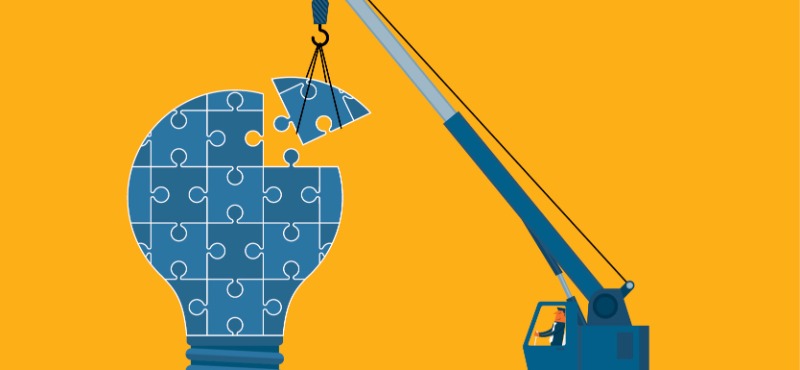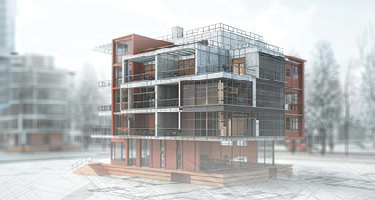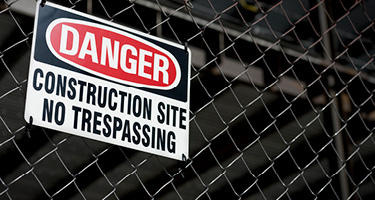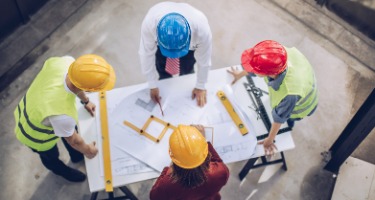On the heels of the worst economic collapse since the Great Depression, the construction industry has seen a striking rebound.
While the industry may have seen its post-recession peak between 2013 and 2015, “non-residential construction firms continue to hire, and staffing levels are well ahead of year-ago levels,” according to Anirban Basu, chief economist of the Associated Builders and Contractors.[1] Other reports forecast 2017 construction growth at a 6 percent increase.[2] The frequency of large-scale projects, in both the public and private sectors, with a construction volume in the billions, has also reached unprecedented levels. Full peak or not, the recovery is real.
This strong return to activity, in both public and private works, has taken place in an environment marked by an equally striking evolution.
The construction industry has long been rather static, with change or evolution often glacial in pace. Spurred in part by technology, the pace has picked up significantly and is notable for several reasons.
Conventionally, construction in the United States has followed the classic “design-bid-build” sequence. Today we are seeing a move toward restructuring that approach—directly or indirectly. Large-scale public infrastructure projects, such as aviation, for example, have seen a dramatic shift toward design-build methodologies. Beyond direct design-build seeing greater usage, hybrids, where projects proceed under some formulation of “design assist,” which is when the design is developed with the benefit of contractor and trade contractor input, is increasingly present.
The United States construction market has also experienced globalization as has occurred in other industries and sectors. Offshore entities have been acquiring United States construction companies with dramatic frequency. Various reasons are cited, including the strength and potential of the United States markets, weakening demand internationally, financial strength among public construction and infrastructure firms and related enterprises, and the potential for the United States to deploy delivery methods more common in other countries, such as public-private partnerships in particular. And while the full story remains to be written, the potential for a meaningful U.S. infrastructure plan could spur even further growth.
Labor has also seen striking evolution. Areas of the United States that were nearly exclusively union for large-scale projects are now seeing “open shop” as the leading mode of contracting. Unions have been making critical adjustments, including to wages and work rules, to compete in these markets that were previously union dominated. This transition has also rolled into the political sphere, as union and open-shop forces have recognized the direct or indirect pressure that legislation and regulation of construction may have on union labor.
The rapid recovery of the construction industry has yielded an environment where resources are taxed. Shortly after construction and design entities retrenched in the wake of the “Great Recession,” the demand for personnel at all levels became extraordinarily great. According to a recent statement by the National Association of Home Builders’ Chief Economist Robert Dietz, “In August [2017], the count of unfilled jobs in the construction sector reach[ed] the highest level since February 2007.”[3]
Companies have commonly experienced the need to staff their organizations to levels greater than before the Great Recession. Labor is stressed in many markets throughout the country, and there is an increasing demand for design professionals and management personnel. In addition to human capital, the availability of materials and other resources is becoming increasingly challenged, as both the United States and the global community are responding to the natural disasters that have struck so many areas in the Americas and Caribbean. Given the significant need for repair and restoration work in the wake of Hurricanes Harvey, Irma, and Maria, we can expect demand to further outmatch supply in the months ahead.
The regulatory and legislative backdrop is also increasingly present in the mindset of those across the construction market, particularly in areas of the country where regulators and prosecutors have assumed an unprecedented level of activity. New York City’s Construction Fraud Task Force is but one example of government intervention following the increase in construction and infrastructure building activity across the country. The agencies involved in the Task Force are active, and the industry should expect a continuing emphasis on investigations.
The consequence has been a construction environment that presents both opportunities and challenges. The opportunities to pursue projects are undeniable, yet the risk involved in such projects is equally real. The industry is also demonstrating attentiveness to such risks at levels not previously seen. An industry that may be perceived by some as having a historical mindset of “We’ll get the job and figure it out later,” is now far more focused on risk management and simultaneously aware of the downside of excessive growth. The sheer scale of projects renders clarity to the downside of such engagements far more than in the past. The role of parent companies that are keeping a watchful eye and maintaining a more direct presence is also likely to result in a greater level of risk management and aversion than has been seen before in these sectors. As a result, the construction and design communities are not simply rushing to take on work; they are more selective and prudent.
As to how these changes have affected the role of construction lawyers, the result has been an essential expansion of the services that the design, development, and construction communities demand. Disputes surely exist and remain a central component of the legal services these industries require, but now the requirements go well beyond. Compliance, risk management, labor guidance, transactional support, safety, and legislative assessments are but a few of the expanded needs that these industries regularly seek from their legal counsel.
In short, the construction, design, and development industries have experienced an evolution that has greatly increased the demand for their services, but the challenges, risk, and complexity involved in so doing are greater.
-------------------------
[1] Nonresidential Construction Spending Stabilizes in August; Spending on Nonresidential Construction Services Is Still Down on a YOY Basis” ABC.org, October 2, 2017.
[2] FMI’s Construction Outlook” FMInet.com, Q1-2017.
[3] Construction Job Openings Reach New Cycle High” NAHB.com, October 11, 2017.
































